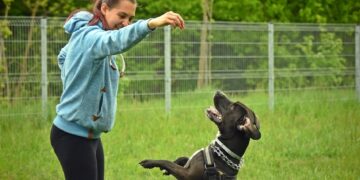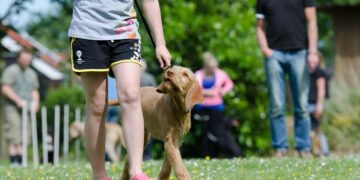Understanding Dog Aggression: Training Options to Ensure Safety
Aggression in dogs can be alarming and potentially dangerous. Addressing this behavior through proper understanding and training is essential for the safety of both the dog and those around it. In this comprehensive guide, we’ll explore the causes of dog aggression, debunk myths, and identify training methods and resources to help manage aggressive behavior effectively.
What Causes Aggression in Dogs?
Dog aggression can stem from various sources, and understanding these is crucial for effective management. Common causes include:
- Fear: A prevalent trigger for aggression, fear can make a dog attack if it feels threatened.
- Protective instincts: Dogs often display aggression to protect their territory, owners, or puppies.
- Pain: An injured or ill dog might show aggression as a response to discomfort or pain.
- Frustration: Often referred to as barrier frustration or redirected aggression, this occurs when a dog is restrained from something it desires.
- Genetics: Some breeds have predispositions that may lead to aggressive tendencies.
Debunking Myths About Dog Aggression
Several myths surrounding dog aggression create misunderstandings and could hinder effective management. Some of these myths include:
- Myth: Aggressive dogs are inherently bad or dangerous.
- Reality: Aggression is often a behavior borne out of environmental situations or health conditions.
- Myth: Aggression cannot be trained out of a dog.
- Reality: With proper training techniques, most forms of aggression can be managed effectively.
- Myth: Only certain breeds are aggressive.
- Reality: Any dog, regardless of breed, can exhibit aggressive behaviors under certain conditions.
Training Techniques to Manage Dog Aggression
Proper training plays a pivotal role in managing and modifying aggressive behavior in dogs. Some effective techniques include:
Positive Reinforcement
This training method involves rewarding the dog for non-aggressive and calm behavior with treats, praise, or play. It encourages the dog to repeat these behaviors.
Desensitization and Counter-conditioning
This involves gradual exposure to the source of aggression at a distance that does not trigger aggressive behavior, and then slowly decreasing the distance while associating the presence of the trigger with something positive.
Behavioral Adjustment Training (BAT)
BAT focuses on changing the underlying feelings that cause aggressive reactions through controlled setups where the dog can engage in naturally rewarding behaviors at a safe distance from the trigger.
Finding Professional Help
If aggression in your dog is pronounced or if you feel you’re not equipped to handle the situation, seeking professional help is crucial. Certified dog trainers or animal behaviorists can provide personalized training programs and support. Here’s how you can locate professionals in your area:
- Referrals: Ask your veterinarian, pet owners, or local pet stores for recommendations.
- Online Directories: Utilize online directories of certified trainers endorsed by professional bodies such as the Association of Professional Dog Trainers (APDT).
- Local Workshops: Attend workshops and seminars in your area to gain insights and connect with professionals.
Ensuring Success in Aggression Management
Successfully managing aggression requires consistency and commitment. Here are some tips to ensure success:
- Maintain a Routine: Dogs benefit from structure and predictability. A consistent routine around feeding, walks, and training can help manage anxiety and aggression.
- Regular Exercise: Adequate physical activity helps reduce excess energy that could contribute to aggressive behavior.
- Monitor Progress: Keep a log of your dog’s behavior to track improvements or setbacks. Adjust your approach based on these observations or consult with a professional.
Conclusion
Dog aggression is a serious issue, but with understanding, proper training, and professional help when needed, it can be managed successfully. By addressing the root causes and employing consistent training strategies, dog owners can help ensure the safety and well-being of their pets and their communities.
If you’re struggling with an aggressive dog, remember that you’re not alone. Many dog owners have successfully navigated this challenge, and resources are available to help you. Embrace the journey with patience and dedication, and you’ll see transformative results.














































